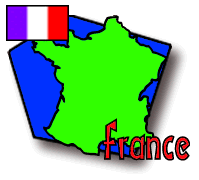Person of the Day: King Louis IX, also known as Saint Louis
Place of the Day: the Camargue
- Centre d'Information du Parc
- Pont Gau
- 13460 Les Saintes-Maries-de-la-Mer
- France
- Tel: +33-04.90.97.86.32
- Fax: +33-04.90.97.70.82
- Réserve Nationale de Camargue
- Société nationale de Protection de la Nature
- La Capelière
- 13200 Arles
- Tel: +33-04.90.97.00.97
- Fax: +33-04.90.97.01.44
Tech Fact of the Day: midges, the scourge of the Camargue
Group Dispatch, June 6-7


Questions? Ask Ethan ![]() !
!
Return to Fast Facts
 |
 |
 |
 |
 |
|
Itinerary/ Journal |
Discussions |
About France |
eDscape Projects |
Scrapbook |
|
|
|
|
|
|
|
Copyright 1997-99 BikeAbout. All rights reserved.
